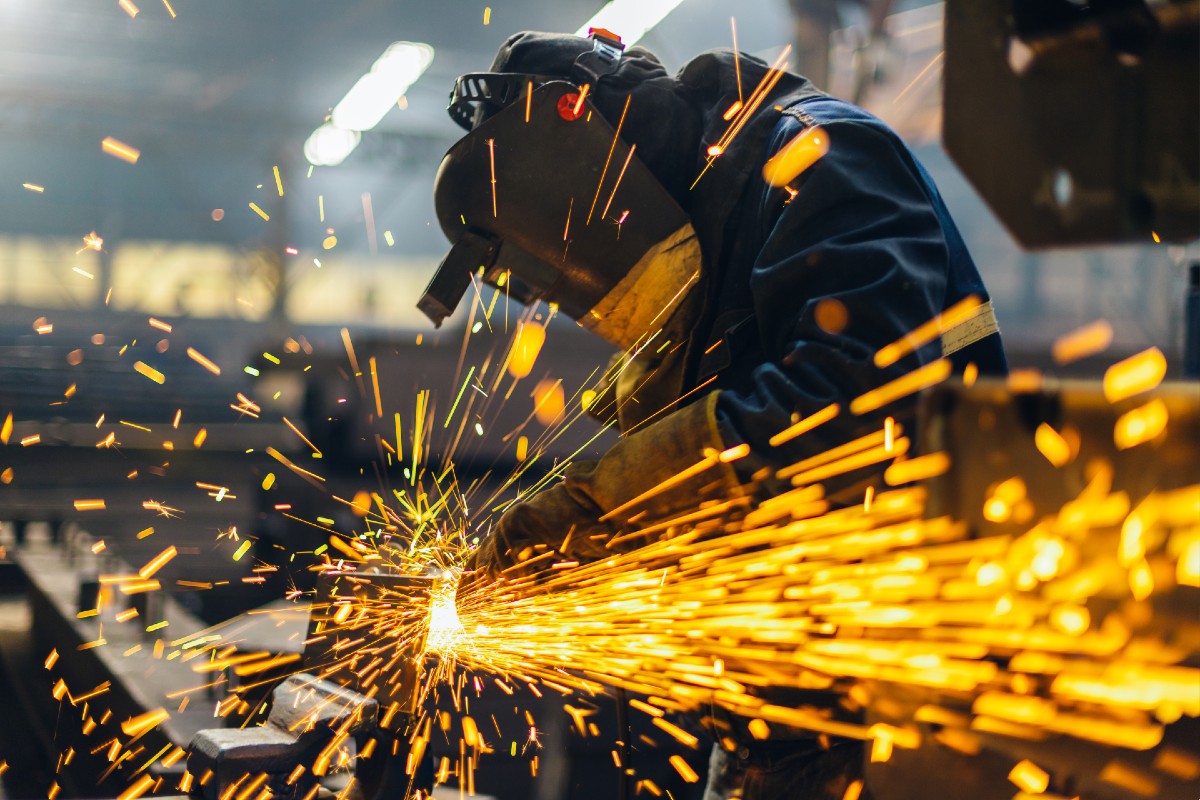The Pros and Cons of Custom Fabrication Over Casting

Should a metal component or product be cast versus fabricated or machined? Neither method is necessarily right or wrong depending on the volume, application, precision, and desired outcomes. Each has its benefits and drawbacks that need to be considered.
In this article, we’ll explain the difference between metal casting and fabrication along with factors that need to be considered when determining which method is most appropriate.
What is Metal Fabrication?
Metal fabrication uses a combination of methods to manipulate various metals or alloys into their final design using raw materials in their solid form (metal sheeting, plate, tubing, blocks, etc.). Methods used to achieve desired dimensions include CNC machining, milling, bending, forming, cutting, and welding.
Fabrication and milling are subtractive methods, resulting in more metal scrap since raw materials are removed to create the desired geometric shapes.
What is Metal Casting?
Casting uses molds to form molten metals or alloys into their desired shapes and is similar to the plastic injection molding process. In die casting, the metal is heated to very high temperatures until it becomes a liquid which is forced into the die (mold) under high pressure. Then, it is allowed to cool and solidify. Once hardened, the die is removed and the component is cleaned to produce the desired finish.
Another casting method is sand casting. Unlike die casting which uses a metal mold, sand casting uses a mold made of sand and fixtures. Molten metal is simply poured into the sand mold and allowed to fill the cavities without being pressurized. Sand casting is generally a more crude method than die casting, resulting in more inclusions and post-production work.
Both die and sand casting have less metal scrap than machining, and any removed materials can usually be remelted for use in other components.
It should be noted that forging is sometimes confused with casting, but they are very different methods. Forging manipulates metal into shape while it is still in solid form versus in a liquid state. Forging has higher tensile and fatigue strength than casting.
Custom Metal Fabrication vs. Casting Considerations
It’s not unusual for an end product to include a combination of fabricated and cast parts. So, which factors help determine the best method to use?
Volume
One of the first considerations an engineer contemplates when choosing between metal casting vs. fabrication is the quantity of components needed. In general, lower quantities are conducive to fabrication and CNC milling whereas high volumes are typically cast. That’s because there’s considerable time and tooling expense to create a die. Once it’s created, however, tens of thousands of parts can be produced quickly.
If you need a dozen or so products, or even a couple hundred, CNC milling and metal fabrication is usually in order. At some point, economies of scale come into play and it is more economical to use casting.
Components produced for niche industries like the Department of Defense (DoD) may only require a handful of components, making machining and fabrication the logical choice. That said, there are always exceptions to the rule, and other factors will come into play.
BOTTOM LINE: Lower volume orders generally lean toward machining and fabrication. Higher volume orders are often cast.
Design Application
Design complexity and cosmetics may indicate whether to use custom fabrication over casting. With the aid of advanced computer software, highly complex and intricate 3D components can be milled on many axes using CNC equipment. Because the method is computerized, it is also a highly repeatable process that can produce multiple identical parts. That said, metal casting also allows for repeatable processes.
Some hollow parts with internal cavities may not allow CNC tooling to reach inside, making them a good candidate for casting. Additionally, items that are cast may not require as much concern over their cosmetic appearance, making it more suitable.
Designs that require a large amount of material to be removed from a metal block may also be more suited to casting, such as engine blocks or large industrial equipment. A massive bulkhead or structural components on a submarine, for example, might be cast or forged. More intricate items like latches, locks, and hinges used on doors and hatches will likely be machined.
BOTTOM LINE: Design for Manufacturability (DfM) plays a major role in whether to cast or machine a part. Work with a metal fabrication engineer to determine the best method of production.
Precision
Machined parts typically have a better finish and smoother surface whereas casting can produce textured surfaces. In fact, sometimes machining is performed on pre-produced metal castings to refine certain details, add threading, or smooth surfaces.
If design flexibility is important to you, then machining is definitely the preferred method. Improvements and design iterations can be programmed into the CNC machine easily to fine tune geometries whereas once a mold is tooled for casting, the design is pretty much set in stone.
Complex assemblies that have many parts and need to be welded, riveted, or joined together in other ways are also more suited to machining. An example is complex electrical enclosures for the DoD. These large units — sometimes 10-feet across or more — have numerous braces, vents, doors, hinges, racks, and other components, all requiring extremely tight geometric dimensioning and tolerancing (GD&T).
BOTTOM LINE: The tightest tolerances and precision can typically be achieved with machining and custom fabrication.
As mentioned, there is a time and place for using either or both metal forming methods. If there’s uncertainty, it’s best to consult with a metal fabrication engineer to determine which elements of your completed project should be machined or cast. If you’ve got a complex project and would like guidance, contact our team of experts today.
When the time comes to request a quote, use our helpful RFQ checklist below with additional considerations.
